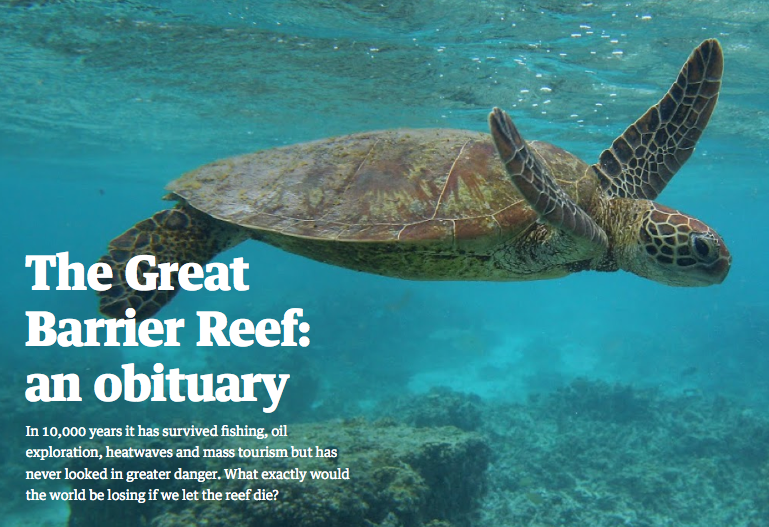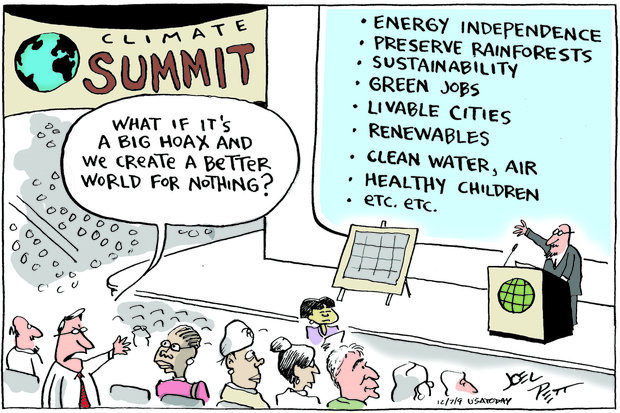Essential idea: Concentrations of gases in the atmosphere affect climates experienced at the Earth’s surface.
The greenhouse effect is accepted scientific theory: the certain gasses in the atmosphere cause the sun's heat to be trapped and allow the surface of the planet to warm. Without it the surface of the planet would be too cold for life to exist.
To explain the images above below are quotes from NASA:
"Left: 1880-1889. Right: 2000-2009. These maps compare temperatures in each region of the world to what they were from 1951 to 1980 ... Two-thirds of the warming has occurred since 1975, at a rate of roughly 0.15 to 0.20 °C per decade."
These changes in temperature correlate with changes in CO2 levels. CO2 is now at a record high of 400 ppm.
To explain the images above below are quotes from NASA:
"Left: 1880-1889. Right: 2000-2009. These maps compare temperatures in each region of the world to what they were from 1951 to 1980 ... Two-thirds of the warming has occurred since 1975, at a rate of roughly 0.15 to 0.20 °C per decade."
These changes in temperature correlate with changes in CO2 levels. CO2 is now at a record high of 400 ppm.
Understandings, applications and skills
| 4.4.U1 | Carbon dioxide and water vapour are the most significant greenhouse gases. |
| 4.4.U2 | Other gases including methane and nitrogen oxides have less impact. [The harmful consequences of ozone depletion do not need to be discussed and it should be made clear that ozone depletion is not the cause of the enhanced greenhouse effect.] |
| 4.4.U3 | The impact of a gas depends on its ability to absorb long wave radiation as well as on its concentration in the atmosphere. [Carbon dioxide, methane and water vapour should be included in discussions.] |
| 4.4.U4 | The warmed Earth emits longer wavelength radiation (heat). |
| 4.4.U5 | Longer wave radiation is absorbed by greenhouse gases that retain the heat in the atmosphere. |
| 4.4.U6 | Global temperatures and climate patterns are influenced by concentrations of greenhouse gases. |
| 4.4.U7 | There is a correlation between rising atmospheric concentrations of carbon dioxide since the start of the industrial revolution 200 years ago and average global temperatures. |
| 4.4.U8 | Recent increases in atmospheric carbon dioxide are largely due to increases in the combustion of fossilized organic matter. |
| 4.4.A1 | Threats to coral reefs from increasing concentrations of dissolved carbon dioxide. |
| 4.4.A2 | Correlations between global temperatures and carbon dioxide concentrations on Earth. |
| 4.4.A3 | Evaluating claims that human activities are not causing climate change. |
[Text in square brackets indicates guidance notes]
Starters and discussion points
|
This interactive multimedia resource by the Guardian can be used as a starter of discussion prompt on the effect of carbon pollution upon a reef ecosystem (4.4.A1 Threats to coral reefs from increasing concentrations of dissolved carbon dioxide)
|
A fun, musical introduction to the greenhouse effect and global warming by Mr W.
|
|
A visual world tour of carbon dioxide emissions by NASA makes the invisible visible
|

This NOAA article explains the impact of ocean acidification on shelled marine invertebrates in general, but this equally applies to corals. "Calcium carbonate minerals are the building blocks for the skeletons and shells of many marine organisms". Acidification is causing the oceans to become "undersaturated" with these minerals which means that animals that build a carbonate skeleton can no longer do so or worse, if the pH levels are low enough, the animal's skeleton will slowly dissolve.
|
Presentation and notes
The presentation is designed to help your understanding. The notes outline is intended to be used as a framework for the development of student notes to aid revision.
|
Use the Cornell notes style template to collate your own notes for Topic 4.4 Climate change.
|
Weblinks
|
Greenhouse effect and global warming
Global carbon cycle by Sunamas Inc. includes details on global warming The greenhouse effect by Sunamas Inc. The greenhouse effect by Damocles Global warming and the greenhouse effect by Earthguide How the greenhouse effect works by BBC News A good article from skeptic.com (first quoted on i-biology) about the science behind the greenhouse effect and global warming What is global warming by National Geographic is an interactive tutorial Climate change resource reel by NASA Global climate change by NASA is a very comprehensive website on many aspects of climate change |
Ocean acidification
Ocean Acidification by the Alliance for Climate Education Acidification alters ocean chemistry and calcification by Sunamas Inc. Rob Dunbar: The threat of ocean acidification by TED talks Demystifying ocean acidification and biodiversity impacts by California Academy of Sciences Acid Test: The Global Challenge of Ocean Acidification by NRDC |
Nature of scienceAssessing claims - assessment of the claims that human activities are producing climate change. (5.2) [covered by 4.4.A3]
The ultimate climate change FAQ by The Guardian Why I must speak out about climate change by James Hansen is a personal tale of a scientist who has assessed the claim that human activity is producing climate change and has decided to act on his conlusion. |
What if we take action on climate change and find out that we are wrong? Environmental cartoons by Joel Pett
|
International-mindedness
Release of greenhouse gases occurs locally but has a global impact, so international cooperation to reduce emissions is essential.
Theory of knowledge
The precautionary principle is meant to guide decision-making in conditions where a lack of certainty exists. Is certainty ever possible in the natural sciences?
Stopping Climate Change Is Much Cheaper Than You Think by Wired looks the economics involved in addressing climate change
Some evidence from owls in a short article by the BBC about how evolution and global warming are linked
A human impact of global warming is the relocation of the entire nation of Kiribati to Fiji because of the threat of rising sea levels
Stopping Climate Change Is Much Cheaper Than You Think by Wired looks the economics involved in addressing climate change
Some evidence from owls in a short article by the BBC about how evolution and global warming are linked
A human impact of global warming is the relocation of the entire nation of Kiribati to Fiji because of the threat of rising sea levels



